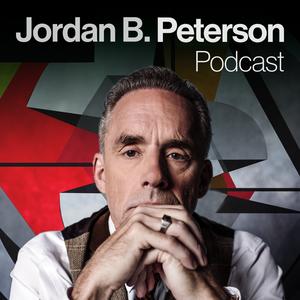Intro
In this episode of 99% Invisible, titled “Craptions,” the focus is on closed captions and the challenges of providing accurate and complete captions for TV shows and streaming content. The National Association of the Deaf has been fighting for accurate captions since 2007, but progress has been slow. The rise of streaming TV has created new challenges, and YouTube remains a major hurdle. The episode explores the importance of captions, the campaign for human-produced captions, and the limitations of automatic captions.
Main Takeaways
The Importance of Closed Captions
- Craptions are captions that are inaccurate, poorly punctuated, and grammatically incorrect.
- Closed captions are essential for people who are deaf or hard of hearing, as well as those learning a new language.
- Half of Americans are using closed captions most of the time, with Gen Z at 70%.
- Most people cite audio sounding muddled as the reason for using closed captions.
- Captions have become normal, especially for younger viewers.
The Fight for Accurate Captions
- The FCC and ADA require TV shows to include accurate and complete captions, but the rise of streaming TV has created new challenges.
- The National Association of the Deaf has been fighting for accurate captions for streaming since 2007, but progress has been slow.
- Netflix initially argued that the ADA didn’t apply to them because they were not a physical location.
- The National Association of the Deaf (NAD) sued Netflix in 2011, and a judge ruled that the ADA did apply to them.
- The NAD has been working with other companies to ensure captioning is available, but YouTube remains a challenge.
The Challenge of Automatic Captions
- YouTube currently does not require captions for all of their videos, and their automatic captions are created using speech recognition technology and AI.
- AI captions still struggle with contextual information and grammar.
- AI captions also struggle with other languages and can adopt certain biases.
- The AI captions will compete with human captioners a lot faster than we think, according to Howard Rosenblum.
- YouTube has seen an increase in the number of human captions submitted by creators, but automatic captions are still the most common type of caption on the platform.
The Campaign for Human-Produced Captions
- Ricky Pointer produced a video called “Things You Shouldn’t Say to People Who Are Deaf or Hard of Hearing” to raise awareness about clueless questions and comments.
- Ricky started a campaign for human closed captions, asking YouTubers to ditch automatic captions and write their own captions instead, or to hire a professional service to make captions for them.
- The campaign went viral, and Ricky caught the attention of some of YouTube’s biggest stars.
- In 2016, Ricky launched a hashtag called No More Craptions, which helped bring the term to the mainstream and encouraged YouTubers to include human-produced captions in their videos.
- Many YouTubers stopped captioning their videos due to the time-consuming and expensive nature of professional captioning.
The Challenges of Sound in Movies and TV Shows
- Dynamic range is a big issue in balancing sound in movies, resulting in dialogue suffering.
- Rise of naturalism in performances has contributed to actors mumbling their lines.
- Dialogue replacement (ADR) is difficult when the original performance is mumbly.
- Down mixing, or compressing 128 channels down to stereo or mono, can muddy the sound.
- Studios often don’t want to spend money on re-recording mixers for down mixing.
Summary
The Importance of Closed Captions
Craptions, which are inaccurate and poorly punctuated captions, highlight the significance of closed captions for people who are deaf or hard of hearing and those learning a new language. The widespread use of closed captions, especially among younger viewers, reflects the normalization of captions as a way to enhance audio clarity.
The Fight for Accurate Captions
The FCC and ADA require accurate and complete captions for TV shows, but the rise of streaming TV has posed challenges. The National Association of the Deaf has been advocating for accurate captions since 2007, leading to a lawsuit against Netflix, which resulted in a ruling that the ADA applies to streaming platforms. However, ensuring accurate captions on platforms like YouTube remains an ongoing struggle.
The Challenge of Automatic Captions
YouTube’s automatic captions, generated using AI and speech recognition technology, have improved to about 70% accuracy. However, they still struggle with contextual information, grammar, and other languages. The rise of AI captions poses a potential threat to human captioners, according to Howard Rosenblum. While YouTube has seen an increase in human-produced captions, automatic captions remain the most common type.
The Campaign for Human-Produced Captions
Ricky Pointer’s campaign for human closed captions gained traction, urging YouTubers to prioritize accurate captions over automatic ones. The No More Craptions hashtag and the support of influential YouTube stars helped raise awareness about the importance of human-produced captions. However, the time-consuming and expensive nature of professional captioning has resulted in some YouTubers discontinuing captioning their videos.
The Challenges of Sound in Movies and TV Shows
The challenges of sound in movies and TV shows, such as dynamic range and the rise of naturalistic performances, contribute to actors mumbling their lines. This poses difficulties in dialogue replacement and down mixing, which can affect the clarity of audio. Studios often prioritize cost-saving measures over ensuring optimal sound quality for down mixing.
Conclusion
Accurate closed captions are crucial for accessibility and language learning. While progress has been made in ensuring accurate captions for TV shows and streaming content, challenges persist, especially on platforms like YouTube. The campaign for human-produced captions highlights the need for accurate and complete captions, but the time and cost involved remain obstacles. As technology continues to advance, finding a balance between AI and human captioning will be crucial in providing the best possible experience for all viewers.
